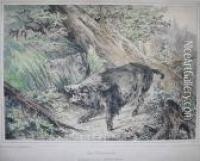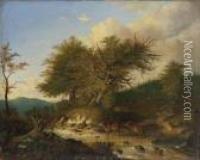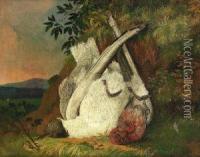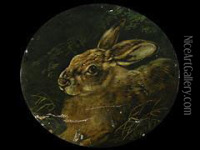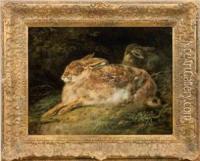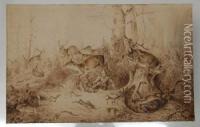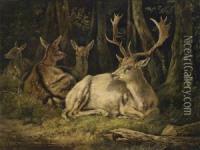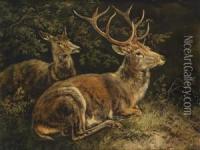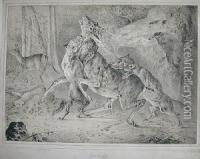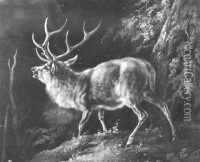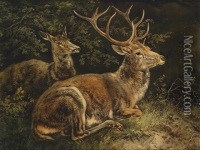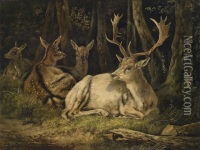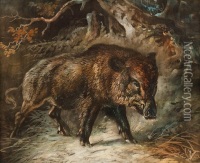August Schleich Paintings
August Schleich was a 19th-century German painter known for his landscape paintings. Born on November 23, 1814, in Munich, Germany, Schleich became associated with the Munich School, a group of artists who played a significant role in the development of German art in the 19th century. Schleich's early interest in art led him to study at the Academy of Fine Arts Munich, where he honed his skills and developed a deep appreciation for the natural world, which would become the central theme of his artistic work.
Schleich's style was characterized by a meticulous attention to detail and a romantic sensibility. He was particularly adept at capturing the atmosphere and mood of a landscape, often portraying the changing seasons, the play of light and shadow, and the diverse textures of the countryside. His paintings frequently depicted the Bavarian Alps and the surrounding regions, which provided a rich source of inspiration for his work.
Throughout his career, Schleich exhibited his paintings in various art shows and gained a respectable following. His work reflected the broader 19th-century interest in naturalism and the romantic movement, which emphasized emotion and individualism. Schleich's landscapes were not just representations of the physical world but also an expression of the artist's inner feelings and his response to the beauty and majesty of nature.
August Schleich passed away on December 6, 1865, in his hometown of Munich. Although he was not as widely recognized as some of his contemporaries during his lifetime, his contribution to the Munich School and to landscape painting has been appreciated by art historians and collectors in the years following his death. His works are now considered important examples of 19th-century German landscape painting and continue to be admired for their beauty and technical skill.
